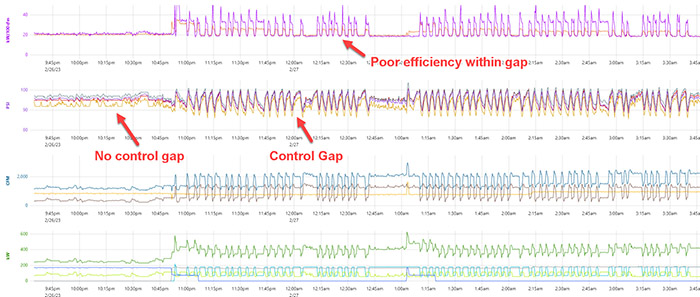Question: I have a 1,000 cfm VSD compressor, but due to motor and control problems it is producing only 560 cfm. I notice my compressors are fighting with each other. What new size of VSD do I need to fix this problem?
Answer: The basic rule in running with a VSD is that the variable capacity must be equal to or larger than the base capacity or control gaps will develop. Within the control gaps the VSD and fixed speed compressors will fight for control.
Example:|
Fix speed capacity = 1,000 cfm
Desired minimum VSD compressor capacity 1,000 cfm + minimum VSD speed cfm.
It is possible to run with a VSD with total capacity of 1,000 cfm (matching the fixed speeds) but not desired. If this is attempted, the complete capacity of the VSD must be used — this requires it to unload or stop to achieve the required variable capacity, not a desired long term operating regime for lubricated-screw VSD.

For example, VSD capacity 1,000 cfm, minimum speed of 200 cfm yields variable capacity of 800 cfm (1,000 minus 200) if the VSD does not unload. This is too small if matched with 1,000 cfm compressors and yields control gaps 200 cfm wide. If the plant load is anywhere between 800 and 1,000 cfm, the compressors will fight.
But if the full 1,000 cfm capacity is used, by unloading or turning off the VSD (not allowing it to run at minimum speed), then this shrinks the control gap to zero.
With your current situation, VSD at 560 full capacity and minimum speed at 300, while not unloading the VSD, the variable capacity is only 260 cfm, this leads to control gaps 740 cfm wide, a disaster.
If you could purchase a 1,200 cfm VSD compressor with about 200 cfm minimum speed (yields 1,000 cfm variable capacity without unloading), this would help your system very much by eliminating the control gap and ensuring the VSD is always running as a trim unit (taking partial loads).
Filed Under: Components Oil Coolers, Compressed Air Technologies, Pneumatic Tips